Where Will Your Retirement Income Come From?
Planning for retirement is a multifaceted process that requires a thorough understanding of the various income streams available to Canadians. A well-structured retirement plan typically integrates government-sponsored programs, personal savings, and employer-sponsored pension plans. This comprehensive guide will help you by providing detailed insights and the latest statistics to help you create a robust and sustainable retirement income strategy.
1. Government-Funded Programs
Canada Pension Plan (CPP)
The Canada Pension Plan is a contributory, earnings-related social insurance program that provides a monthly retirement pension to eligible Canadians. The amount you receive is contingent upon your average earnings throughout your working life, your contributions to the CPP, and the age at which you choose to start receiving your pension.
- Maximum Monthly Benefit: As of January 2025, the maximum monthly amount for new beneficiaries starting their pension at age 65 is $1,433.00. Canada.ca
- Average Monthly Benefit: The average amount paid for a new retirement pension (at age 65) is approximately $899.67 per month. Canada.ca
- Eligibility: To qualify, you must have made at least one valid contribution to the CPP and be at least 60 years old.
- Contribution Rates: In 2024, the contribution rate for employees is 5.95% on earnings between $3,500 and $68,500, with a maximum contribution of $3,867.50. Employers match this contribution, and self-employed individuals pay both portions, totaling 11.90%.
Old Age Security (OAS)
The Old Age Security program provides a monthly pension to Canadians aged 65 and older, regardless of their work history.
- Maximum Monthly Benefit: For the April to June 2025 quarter, the maximum monthly OAS payment is $727.67 for individuals aged 65 to 74, and $800.44 for those aged 75 and over.
- Eligibility: You must be 65 years or older and have lived in Canada for at least 10 years since the age of 18.
- Clawback Provision: OAS benefits are subject to a recovery tax (clawback) if your annual net income exceeds a certain threshold. For the April to June 2025 quarter, the income threshold is $142,609 for individuals aged 65 to 74.
Guaranteed Income Supplement (GIS)
The GIS provides additional support to low-income OAS recipients.
- Maximum Monthly Benefit: As of April to June 2025, the maximum monthly GIS payment for a single individual is $1,086.88.
- Eligibility: Available to OAS recipients with annual incomes below $22,056.
2. Private Registered Investments
Registered Retirement Savings Plan (RRSP)
An RRSP is a personal savings plan that allows you to save for retirement on a tax-deferred basis.
- Contribution Limit: For 2024, the annual contribution limit is 18% of your earned income from the previous year, up to a maximum of $31,560. Canada.ca
- Tax Advantages: Contributions are tax-deductible, and investment growth is tax-deferred until withdrawal.
- Withdrawal Rules: Funds can be withdrawn at any time but are subject to income tax. By the end of the year you turn 71, you must convert your RRSP into a Registered Retirement Income Fund (RRIF) or an annuity.
Tax-Free Savings Account (TFSA)
A TFSA allows you to earn investment income tax-free throughout your lifetime.
- Contribution Limit: The annual TFSA dollar limit for 2025 is $7,000. Canada.ca
- Tax Advantages: Contributions are made with after-tax dollars, but investment growth and withdrawals are tax-free.
- Flexibility: Unused contribution room can be carried forward indefinitely, and withdrawals can be re-contributed in future years without penalty.
3. Workplace-Sponsored Retirement Savings Plans
Defined Benefit Pension Plans
In a defined benefit (DB) pension plan, your employer promises to pay you a specific retirement income based on a formula that typically considers your salary and years of service.
- Predictability: Provides a guaranteed income for life, offering financial security.
- Employer Responsibility: The employer is responsible for managing the plan’s investments and bearing the investment risk.
- Contribution Structure: Both you and your employer usually contribute to the plan.
Defined Contribution Pension Plans
In a defined contribution (DC) pension plan, contributions are defined, but the retirement benefit depends on the investment performance of those contributions.
- Investment Risk: The employee bears the investment risk, and retirement income is not guaranteed.
- Contribution Structure: Both employee and employer contributions are invested, and the accumulated funds are used to provide retirement income.
4. Personal Savings and Investments
Beyond registered plans, personal savings and non-registered investments can play a crucial role in your retirement income strategy.
- Investment Vehicles: Stocks, bonds, mutual funds, real estate, and other assets can provide additional income streams.
- Tax Considerations: Investment income from non-registered accounts is subject to taxation, so it’s important to plan accordingly.
5. Employment Income
Many Canadians choose to stay professionally active after their formal retirement date — not out of necessity, but for flexibility, mental stimulation, or to support their lifestyle goals.
- Partial Retirement: Increasingly popular among Canadians in their early 60s, partial retirement allows for reduced hours while maintaining some level of income and benefits.
- Consulting or Freelance Work: Experienced professionals may continue earning through contract work in their field.
- Impact on CPP and OAS: Earning income during retirement may affect OAS clawbacks and marginal tax brackets. It’s important to factor this into your drawdown plan to avoid unintended tax exposure.
According to Statistics Canada, as of 2023, 18.5% of men and 10.8% of women aged 65 and older were still working — a trend that reflects changing retirement norms, longer life expectancy, and rising living costs.
6. Income Planning: How to Structure Your Withdrawals
Creating a retirement income plan isn’t just about the sources — it’s about how and when you access each one. A smart withdrawal strategy helps:
- Maximize after-tax income
- Delay or reduce OAS clawbacks
- Preserve capital in volatile years.
General Sequence Strategy:
- Non-registered savings — Low tax exposure (only gains/dividends are taxable)
- RRSPs/RRIFs — Fully taxable, but can be income-split after age 65.
- TFSAs — Completely tax-free, ideal for managing large one-time expenses or income smoothing
- Annuities/Pensions — Used to lock in predictable income, often for essentials
If managed correctly, this sequence helps reduce tax drag while keeping income stable.
7. Real Cost of Under-Planning
Failure to plan for multiple income sources may leave retirees dependent on government benefits alone – which are not designed to fully replace employment income.
Let’s put it into perspective:
- Max CPP (2025): $1,433/month (Canada.ca – CPP Payment Amounts)
- Max OAS (2025, age 65–74): $727/month (Canada.ca – OAS Payments)
- Total Annual Max (CPP + OAS): ~$25,920
Now compare that to Canada’s low-income threshold for a single person, which was $24,347 as of 2022, according to Statistics Canada.
This means a single retiree relying solely on government programs may already be below or barely above the poverty line, even when collecting the maximum possible amounts — which most Canadians don’t qualify for. The average CPP payout is closer to $899.67/month, which further reduces the real-world figure.
8. What the Data Says About Canadian Saving Habits
Despite available tools, many Canadians are not fully taking advantage of registered retirement programs:
- Only 21.18%% of tax filers contributed to an RRSP in 2023
- Median RRSP contribution: $4,000
- Many retirees underutilize TFSAs or don’t maximize their employer plans.
According to Desjardins, the optimal strategy involves combining RRSPs (for tax-deferred accumulation) with TFSAs (for flexibility and clawback protection), yet very few Canadians build long-term coordination strategies around these vehicles.
Final Thought: Build a Coordinated Income Plan, Not a Patchwork
A successful retirement income strategy doesn’t rely on one or two sources — it blends multiple layers of guaranteed and investment-driven income, managed through tax-smart withdrawals and updated annually.
At Orlando Ali Financial, we help you:
- Understand how each income stream fits your plan
- Coordinate RRIF, TFSA, and non-registered withdrawals.
- Plan around OAS clawbacks and tax thresholds.
- Integrate pensions, annuities, and healthcare planning into one holistic view.
A reliable retirement income doesn’t happen by accident — it’s designed, monitored, and adjusted over time.
Sources:
[1] www.livingin-canada.com/retirement-pensions-canada.html
[3] https://www.ctvnews.ca/canada/census-children-make-up-one-quarter-of-4-8m-canadians-living-in-poverty-1.3587472
[4] https://www.desjardins.com/ca/personal/savings-investment/tax-sheltered-plans/compare-rrsp-tfsa/index.jsp
[5] https://www.desjardins.com/ca/personal/savings-investment/tax-sheltered-plans/tfsa/
[6] www.livingin-canada.com/retirement-pensions-canada.html
Table of Content



